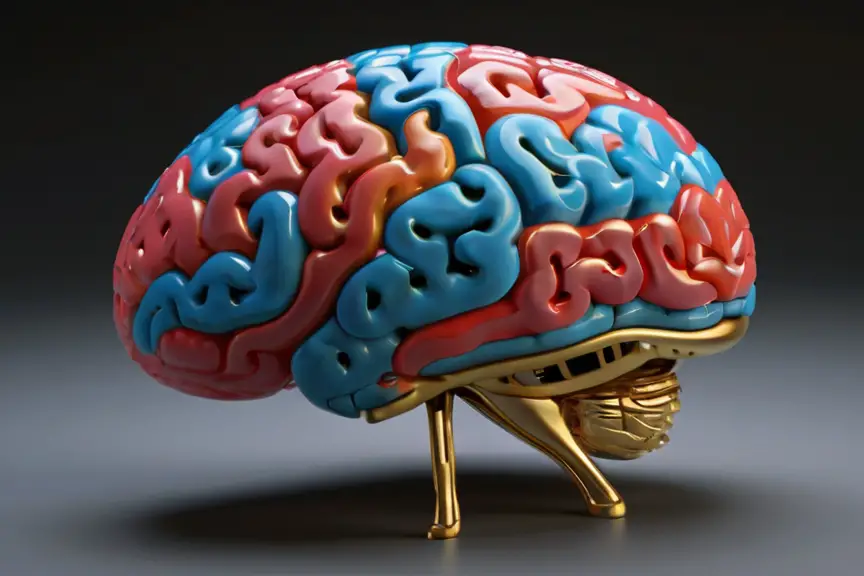
Amyotrophic Lateral Sclerosis (ALS) and Multiple Sclerosis (MS) are two neurological disorders that affect the nervous system.
While both conditions involve the deterioration of nerve cells, they have distinct differences in their symptoms, causes, and treatments.
In this blog post, we will discuss the similarities and differences between ALS and MS, providing you with valuable insights into these conditions.
What is ALS (Amyotrophic Lateral Sclerosis)?
Amyotrophic Lateral Sclerosis (ALS), commonly referred to as Lou Gehrig’s disease, is a progressive neurodegenerative condition.
It impacts motor neurons found in both the brain and the spinal cord, resulting in weakened muscles, their shrinkage, and eventual paralysis.
Typically, individuals diagnosed with ALS face a grim prognosis, with life expectancy ranging from 2 to 5 years post symptom onset.
- Read also: A Comprehensive Guide: Understanding Cerebral Dysrhythmia
- Read also: Unraveling the Mysteries of the Transverse Cerebral Fissure
ALS symptoms
ALS symptoms include:
- Muscle weakness and stiffness
- Loss of coordination and muscle control
- Difficulty moving the limbs
- Fatigue
- Difficulty walking
- Involuntary muscle spasms
- Muscle cramps
- Numbness or tingling of the face or body
- Tripping or falling tendencies
- Weakness or clumsiness in the hands
- Difficulty holding your head up or maintaining good posture
- Dizziness or vertigo
- Vision problems
- Slurred speech or difficulty swallowing
- Sexual dysfunction
- Bowel problems

What is MS (Multiple Sclerosis)?
Multiple Sclerosis (MS) is a long-term autoimmune condition that impacts the central nervous system.
This disorder occurs when the immune system mistakenly attacks the protective covering of nerve fibers, disrupting communication between the brain and other parts of the body.
Symptoms of MS can vary greatly in severity and may include fatigue, muscle weakness, and cognitive challenges.
MS symptoms
MS symptoms include:
- Fatigue and weakness
- Difficulties with walking and balance
- Vision problems
- Pain, numbness, or tingling
- Bladder or bowel problems
- Changes in thinking and memory
- Depression
- Mood swings
- Cognitive problems
Similarities Between ALS and MS
While ALS (Amyotrophic Lateral Sclerosis) and MS (Multiple Sclerosis) are separate conditions, they exhibit certain similarities in their characteristics.
Central nervous system impact
Both ALS and MS affect the central nervous system (CNS), which serves as the command center for all bodily functions.
In ALS, motor neurons in the brain and spinal cord degenerate, while in MS, the protective covering of nerve fibers in the CNS is attacked by the immune system.
This disruption in the CNS function can result in a wide array of neurological issues.
Muscle involvement
A defining aspect of both diseases is their impact on muscle function.
Individuals with ALS often experience progressive muscle weakness, leading to difficulties in movement, swallowing, and speech.
Similarly, MS can cause muscle weakness, stiffness, fatigue, and challenges with coordination and mobility.
These muscle-related symptoms significantly affect the daily lives of individuals with both ALS and MS.
Symptoms
During the initial stages, ALS and MS can present with comparable symptoms, such as muscle weakness, fatigue, and problems with walking.
This overlap in symptoms can sometimes complicate the diagnostic process, requiring thorough evaluation by healthcare professionals to differentiate between the two conditions.
No known cure
Presently, there is no cure for either ALS or MS.
However, various treatment approaches are available to manage symptoms and enhance quality of life for affected individuals.
These treatment options may include medications, physical therapy, occupational therapy, speech therapy, and assistive devices.
Additionally, ongoing research endeavors aim to uncover new therapeutic strategies to address the underlying mechanisms of these diseases.
Neurodegenerative processes
ALS and MS are both classified as neurodegenerative diseases, indicating the progressive degeneration and loss of nerve cells over time.
In ALS, the deterioration primarily affects motor neurons, while in MS, it involves damage to the myelin sheath surrounding nerve fibers.
Despite the differing mechanisms, the end result is a decline in neurological function, contributing to the disabling nature of both conditions.

Differences Between ALS and MS
Here’s a table outlining the main differences between Amyotrophic Lateral Sclerosis (ALS) and Multiple Sclerosis (MS):
| Aspect | ALS | MS |
| Type of Disease | Neurodegenerative | Autoimmune |
| Affected Area | Motor neurons |
Central Nervous System (CNS)
|
| Symptoms | Primarily motor-related: weakness, muscle atrophy, twitching |
Motor, sensory, and cognitive: fatigue, weakness, numbness, tingling
|
| Progression | Rapid progression leading to severe disability and death |
Relapsing-remitting or progressive, usually with periods of remission and exacerbation
|
| Cause | Mostly unknown, possibly genetic or environmental factors |
Autoimmune response against myelin or genetic factors
|
| Diagnosis | Clinical assessment, EMG, MRI |
MRI, lumbar puncture, clinical history
|
| Treatment | Supportive care, physical therapy |
Disease-modifying drugs, steroids, symptom management
|
| Prognosis | Poor |
Variable, with many individuals experiencing periods of remission
|
How To Treat For ALS and MS
Treatment for Amyotrophic Lateral Sclerosis (ALS) and Multiple Sclerosis (MS) aims to slow the progression of these conditions and manage their symptoms.
ALS Treatment
ALS (Amyotrophic Lateral Sclerosis) treatment aims to manage symptoms, slow disease progression, and improve quality of life for patients.
Here are some key interventions used in ALS management:
Riluzole (Rilutek or Tiglutik)
This medication is often prescribed to individuals with ALS as it may help reduce damage to muscles and slow down the progression of the disease.
It works by decreasing the release of glutamate, a neurotransmitter that can cause damage to nerve cells when present in excessive amounts.
Edaravone (Radicava)
Another drug approved for ALS treatment, Edaravone, has shown promise in slowing the progression of the disease.
It acts as a free radical scavenger, reducing oxidative stress and potentially protecting nerve cells from damage.
Sodium Phenylbutyrate/Taurursodiol
Approved for ALS patients in September 2022, this oral medication offers another option for managing the disease.
It works by modulating cellular processes and may have neuroprotective effects in ALS.
Tofersen
Specifically approved for ALS associated with an inherited mutation in the SOD1 gene, Tofersen is administered via an intrathecal route.
It targets the underlying genetic cause of ALS by reducing the production of toxic proteins, potentially slowing disease progression.
Symptom management
ALS patients often experience various symptoms such as fatigue, pain, muscle cramps, spasms, and emotional changes.
Medications and supportive therapies can be utilized to alleviate these symptoms and enhance patient comfort and well-being.
Condition management strategies
In addition to medications, ALS patients benefit from a multidisciplinary approach to care.
Physical therapy helps maintain mobility and prevent muscle stiffness, while speech therapy assists with communication difficulties.
Assistive technology, such as communication devices and mobility aids, can greatly enhance independence.
Feeding tubes and ventilators may be necessary for individuals experiencing difficulty swallowing or breathing.
Occupational therapy focuses on adapting daily activities to accommodate physical limitations and maximize independence.

MS Treatment
Multiple Sclerosis (MS) treatment focuses on managing symptoms, preventing relapses, and slowing disease progression.
Here are some key interventions used in MS management:
Disease-Modifying Therapies (DMTs)
Approved by the FDA, DMTs such as Avonex, Betaseron, Copaxone, and newer medications like Kesimpta, are designed to modify the course of the disease by reducing the frequency and severity of relapses in individuals with relapsing forms of MS.
These medications work by targeting the immune system to prevent it from attacking the central nervous system.
Corticosteroid injections
In cases of severe relapses or exacerbations of MS symptoms, corticosteroid injections may be administered to reduce nerve inflammation and manage acute symptoms.
These injections can help shorten the duration and severity of relapses, allowing individuals to recover more quickly.
Plasma exchange
Plasma exchange, also known as plasmapheresis, is a treatment option for individuals with severe MS symptoms that do not respond to other medications.
During plasma exchange, blood is removed from the body, separated from the plasma (which contains immune cells), and then returned to the body.
This process can help remove harmful antibodies and inflammatory factors from the blood, providing temporary relief from severe symptoms.
Lifestyle remedies
Lifestyle modifications play a crucial role in MS management.
Regular exercise helps maintain strength, flexibility, and overall well-being.
Avoiding smoking and consuming a balanced diet rich in fruits, vegetables, and whole grains can support overall health.
Additionally, taking doctor-recommended supplements, such as vitamin D, may be beneficial for some individuals with MS.
Physical therapy
Physical therapy is essential for individuals with MS to maintain mobility, strength, and balance.
Therapists can design personalized exercise programs to address specific physical challenges and prevent secondary complications, such as muscle weakness and contractures.
Symptom management
MS patients often experience a range of symptoms, including depression, constipation, pain, and itching.
Treatment options for these symptoms may include medications, counseling, dietary modifications, and topical creams or ointments.

- Read also: Neurotypical vs. Neurodivergent Brains
- Read also: A Comprehensive Guide: Various Types of Cerebral Aneurysms
Conclusion
Though ALS and MS exhibit some similarities, they are distinct neurological disorders with varying causes, symptoms, and treatment approaches.
Recognizing these differences is crucial for individuals affected by ALS or MS, as well as their families and caregivers, to make well-informed decisions regarding their care and support.
FAQs
ALS primarily affects motor neurons, leading to muscle weakness, atrophy, and paralysis, while MS affects the central nervous system, causing communication problems between the brain and the rest of the body.
There is no cure for ALS, but treatments can help manage symptoms and improve quality of life. These may include medications, physical therapy, and assistive devices.
ALS is a progressive neurodegenerative disorder with a relatively short survival time, usually within 2-5 years after the onset of symptoms.
MS is an autoimmune disorder that can be treated with various medications to manage symptoms and slow disease progression.
Relapsing-remitting MS is characterized by distinct relapses followed by periods of remission, while primary progressive MS is a continuous worsening of symptoms from the beginning.


